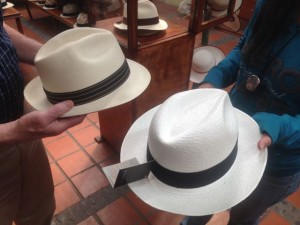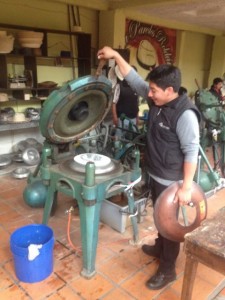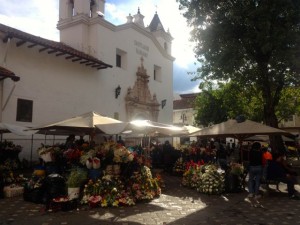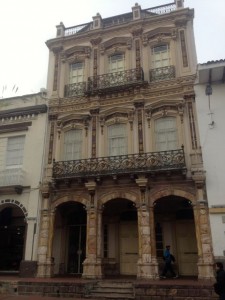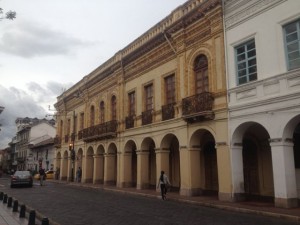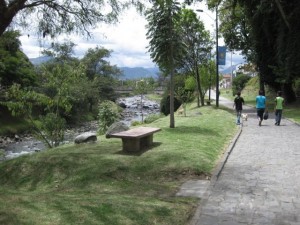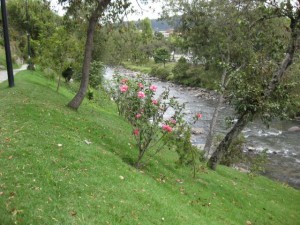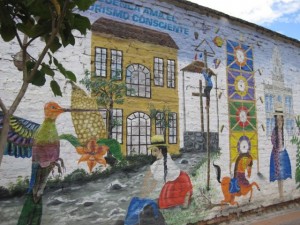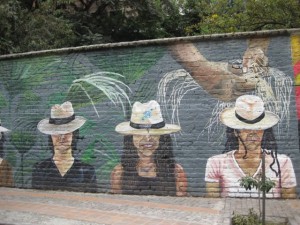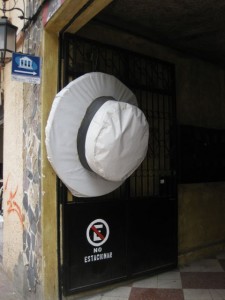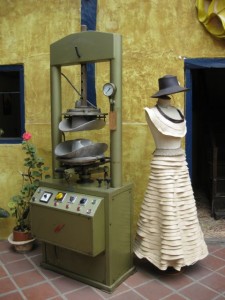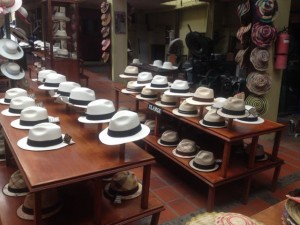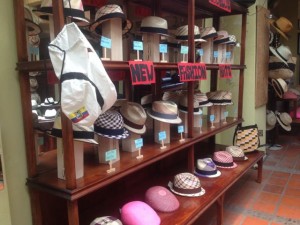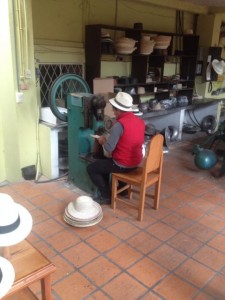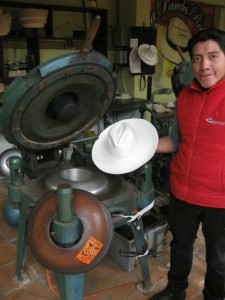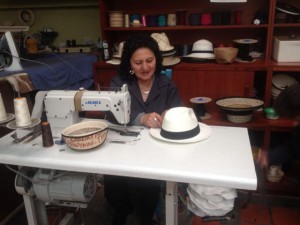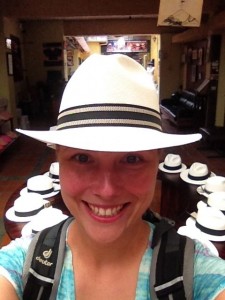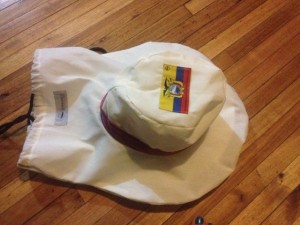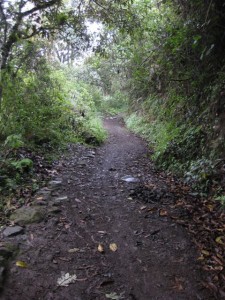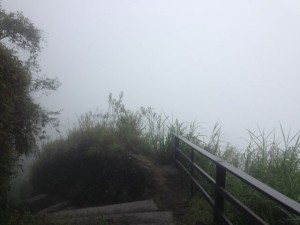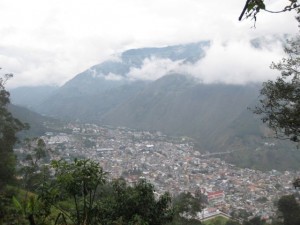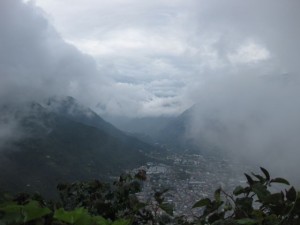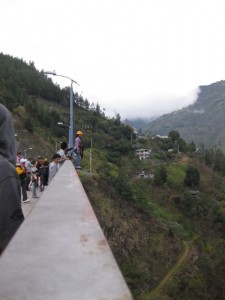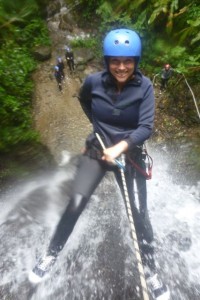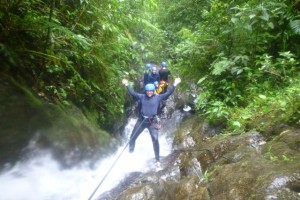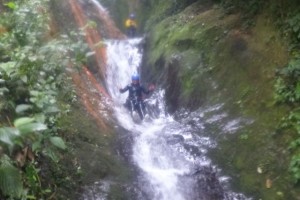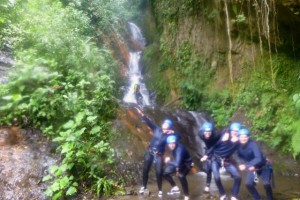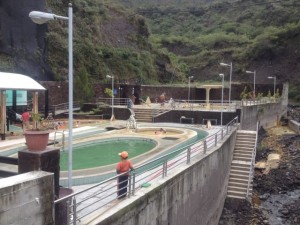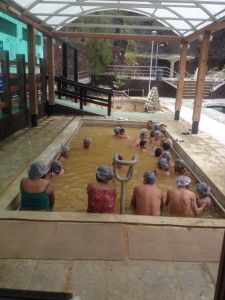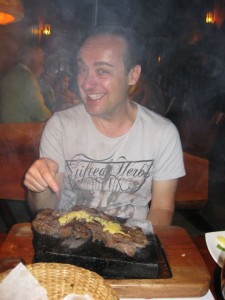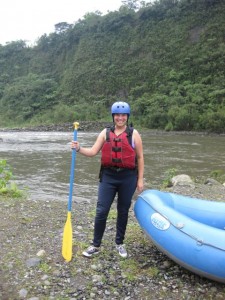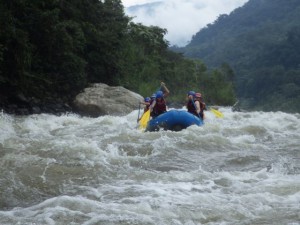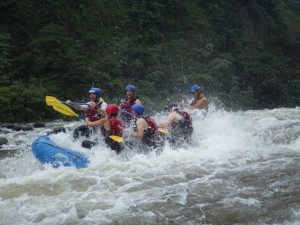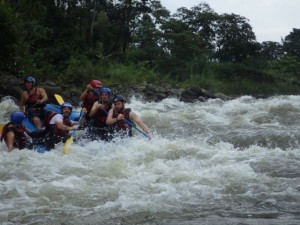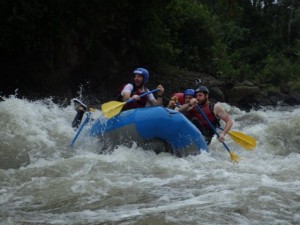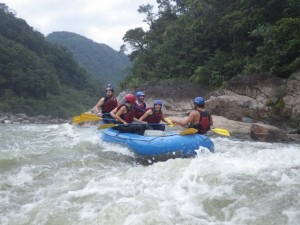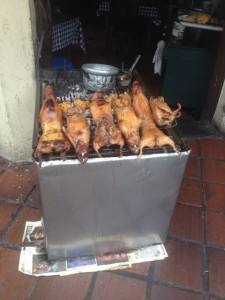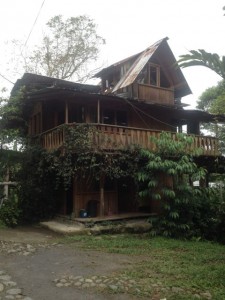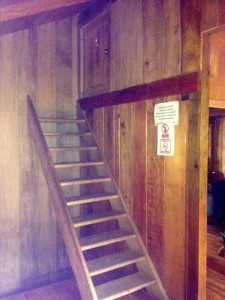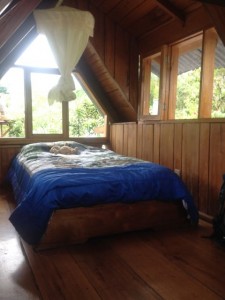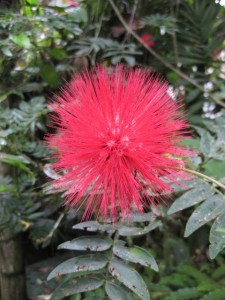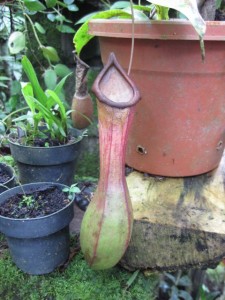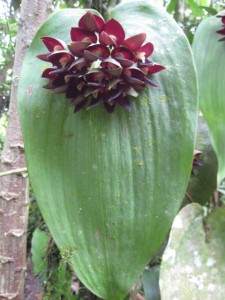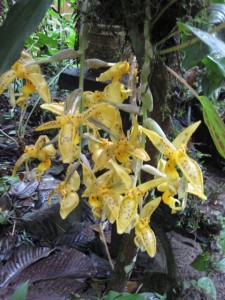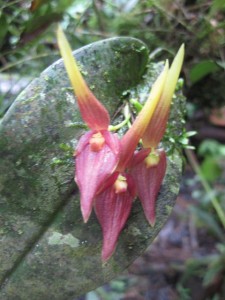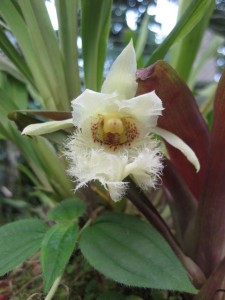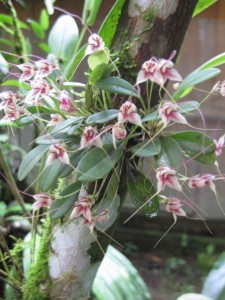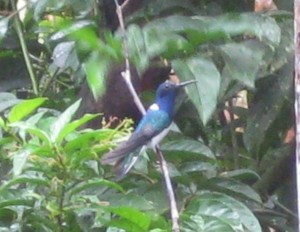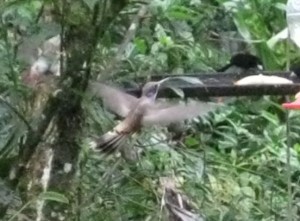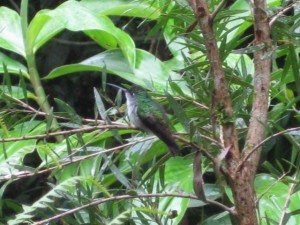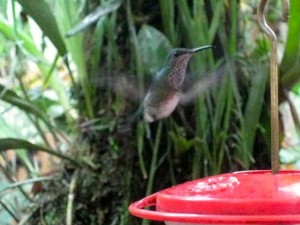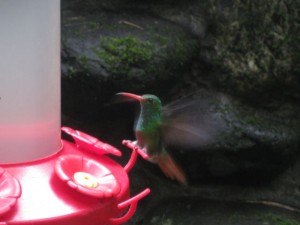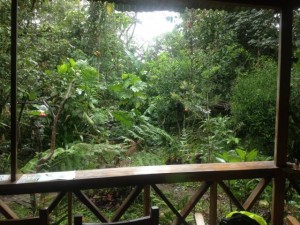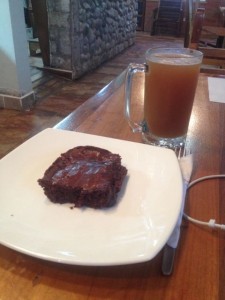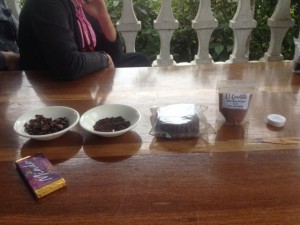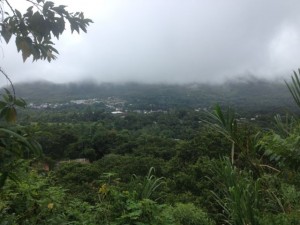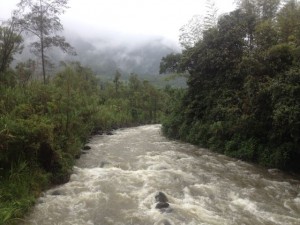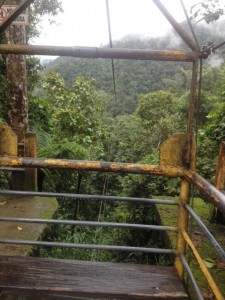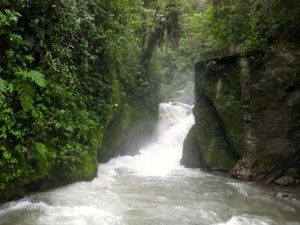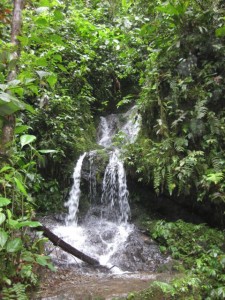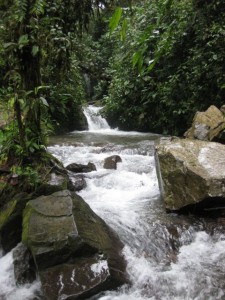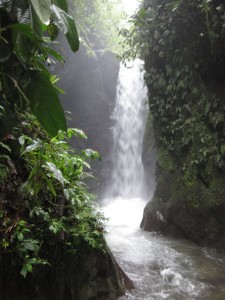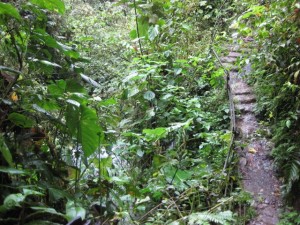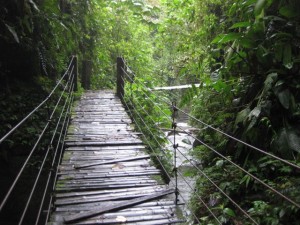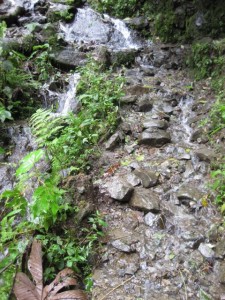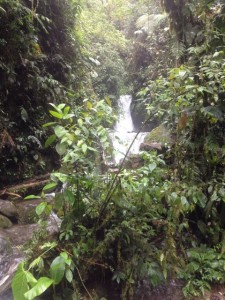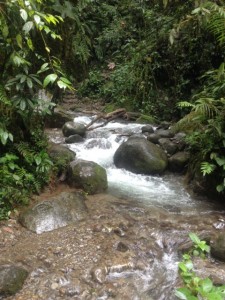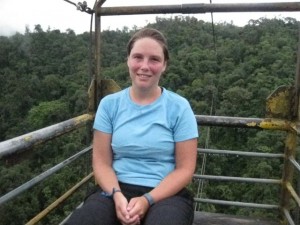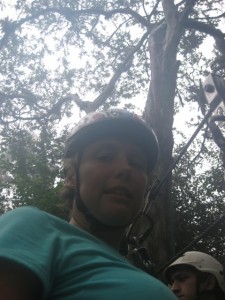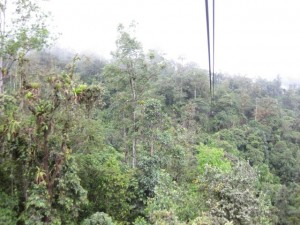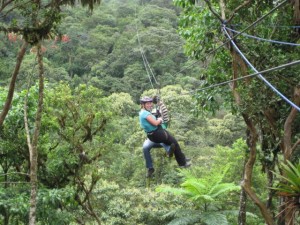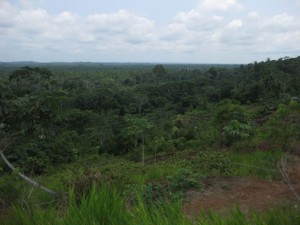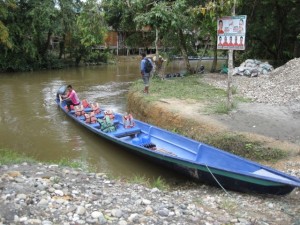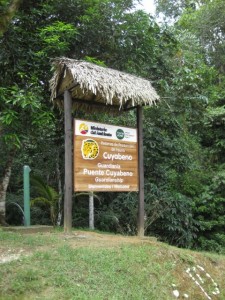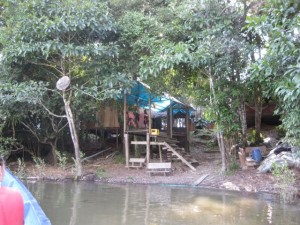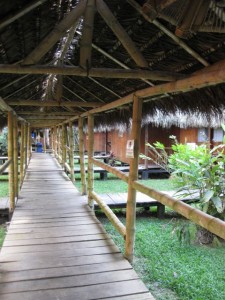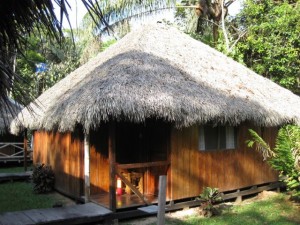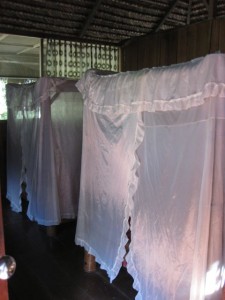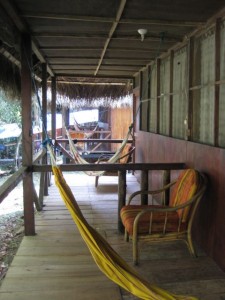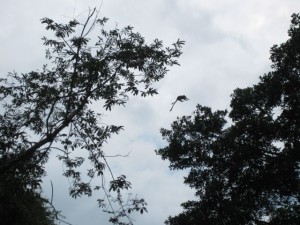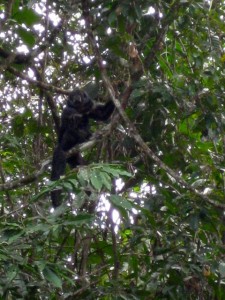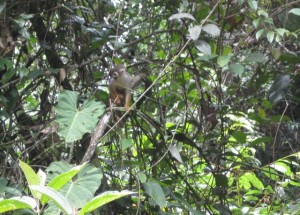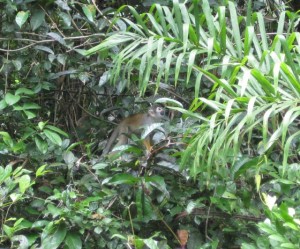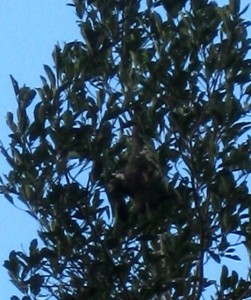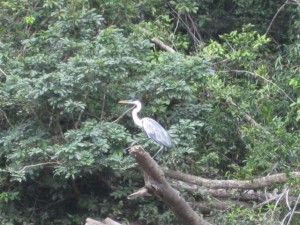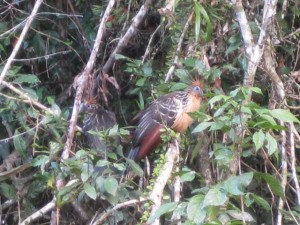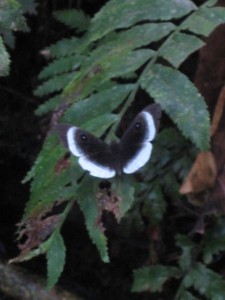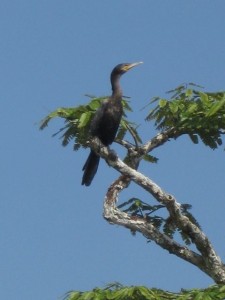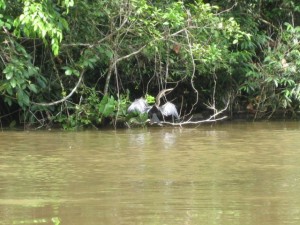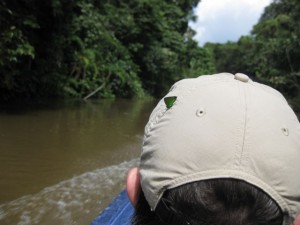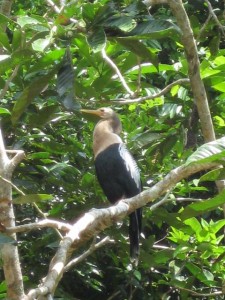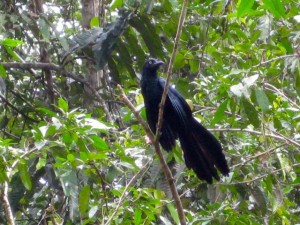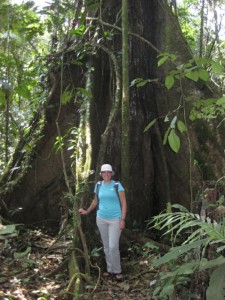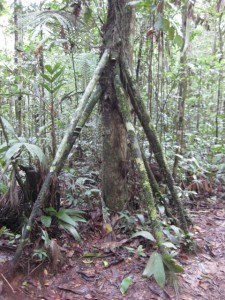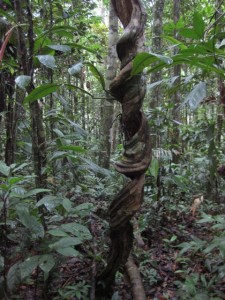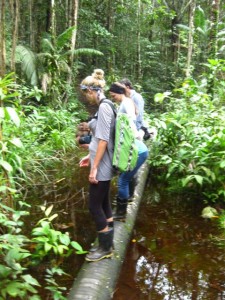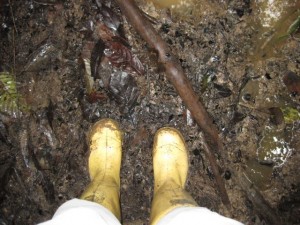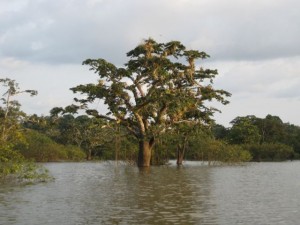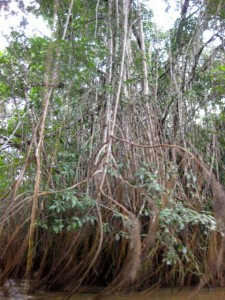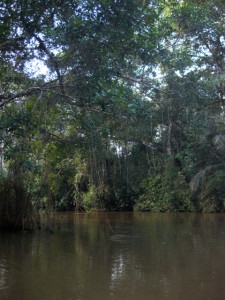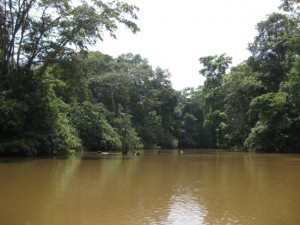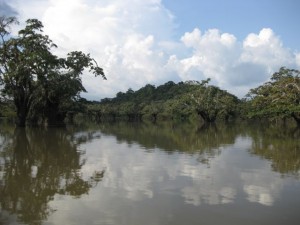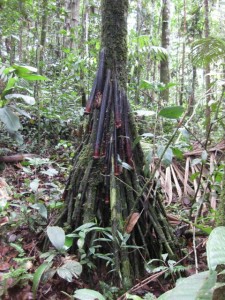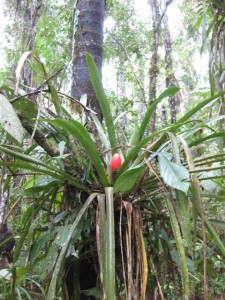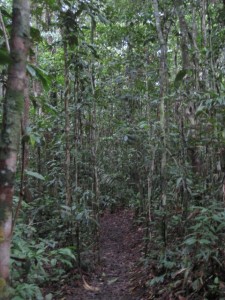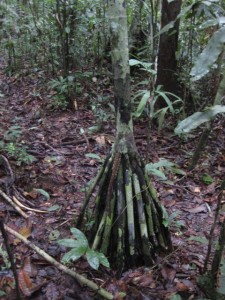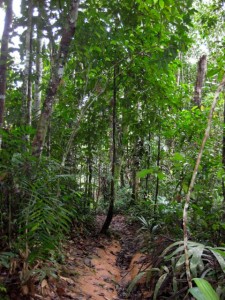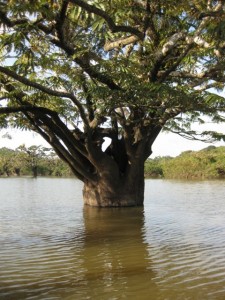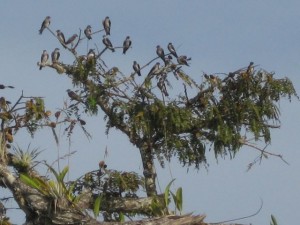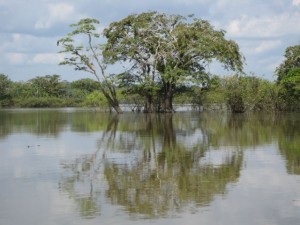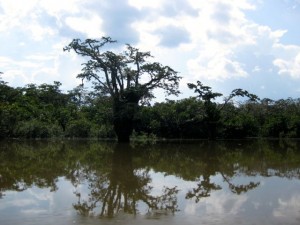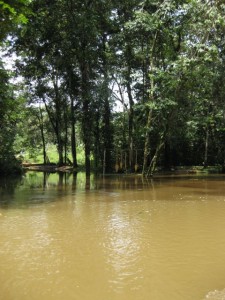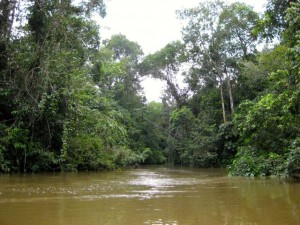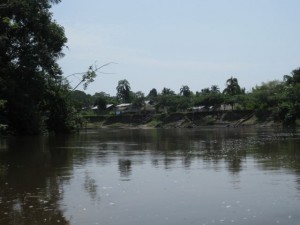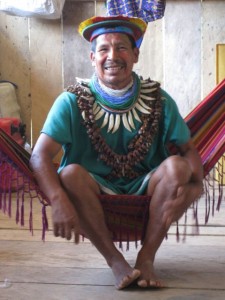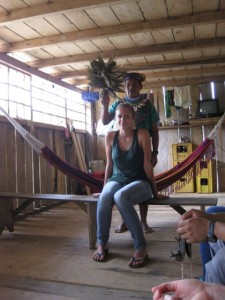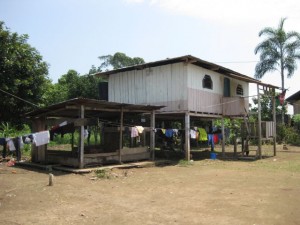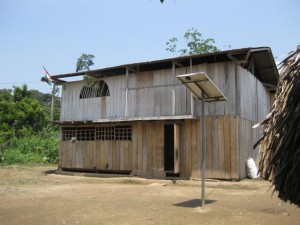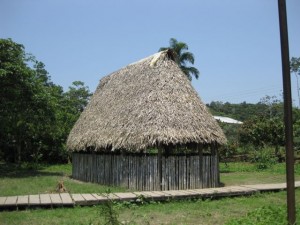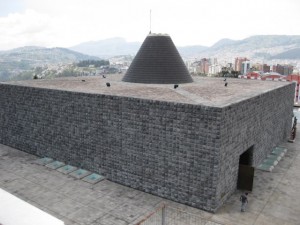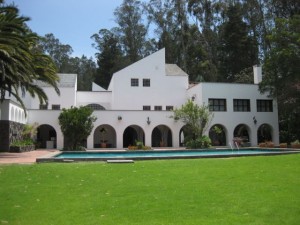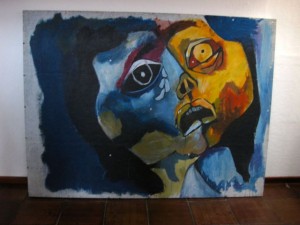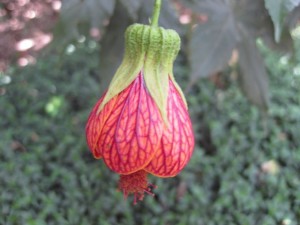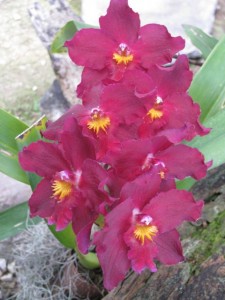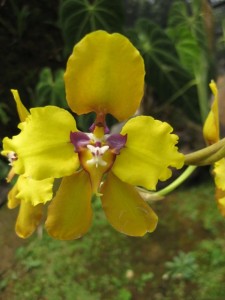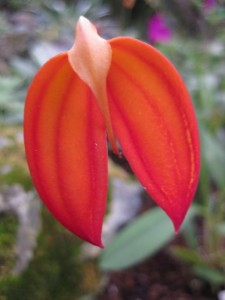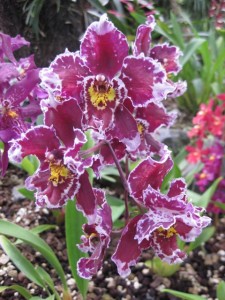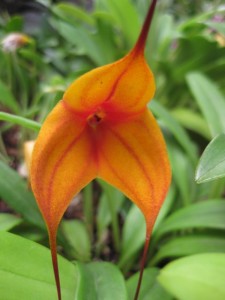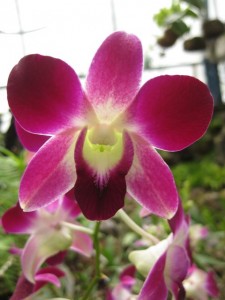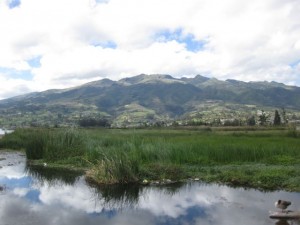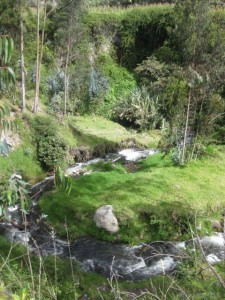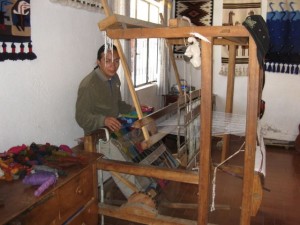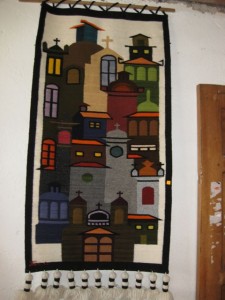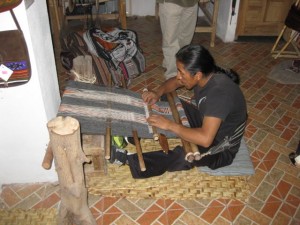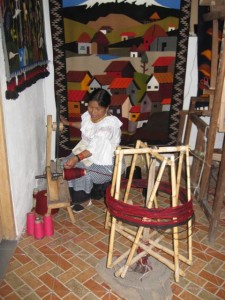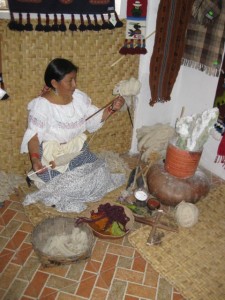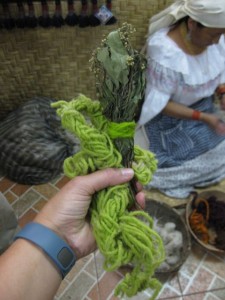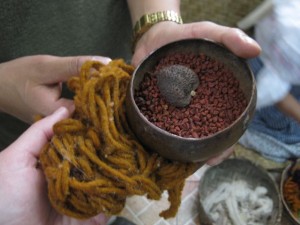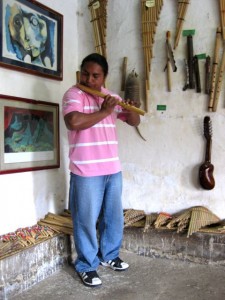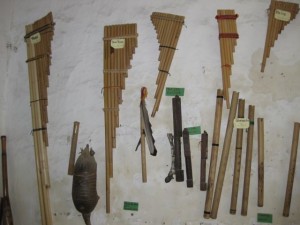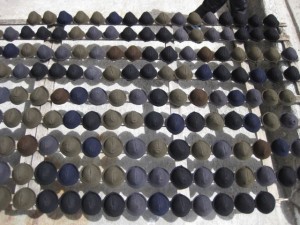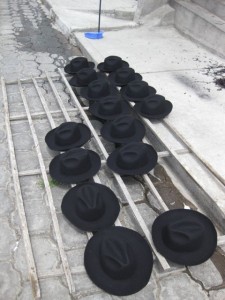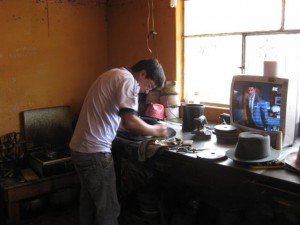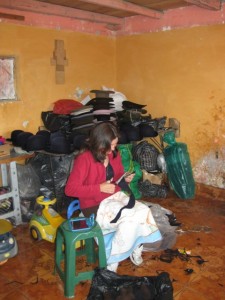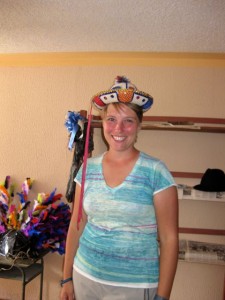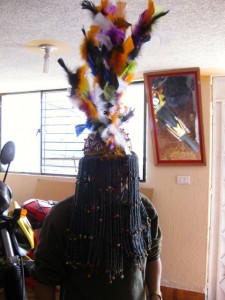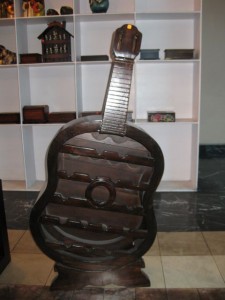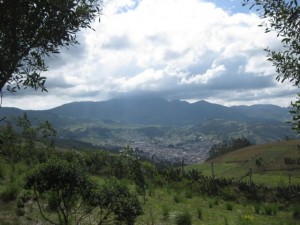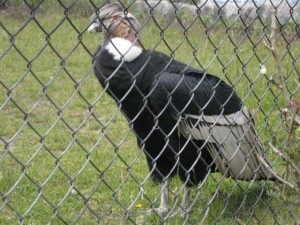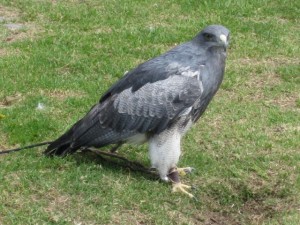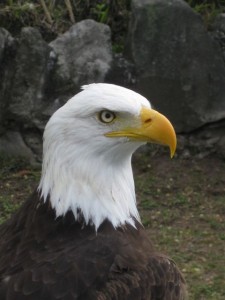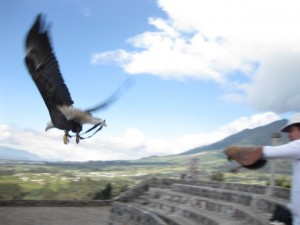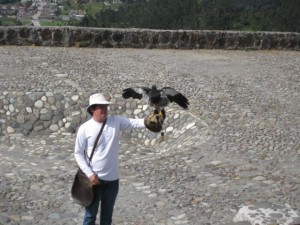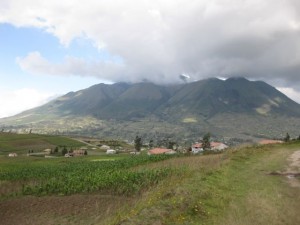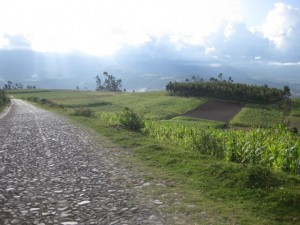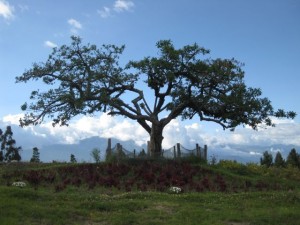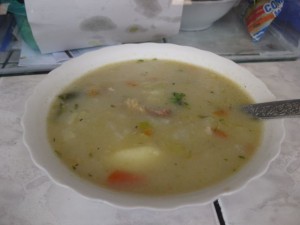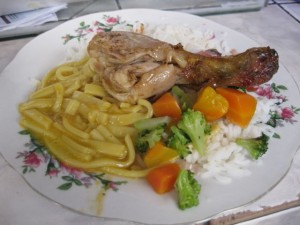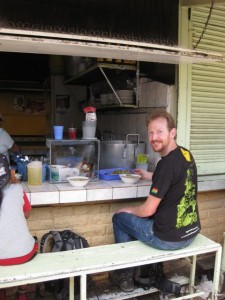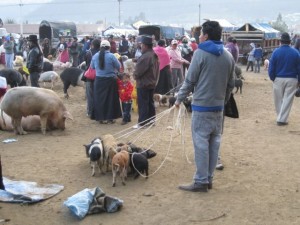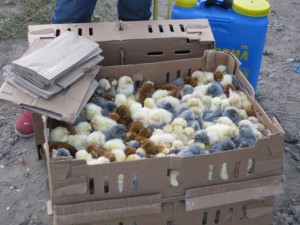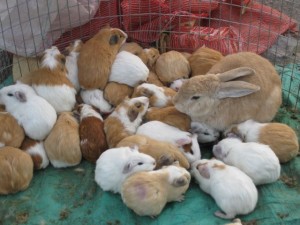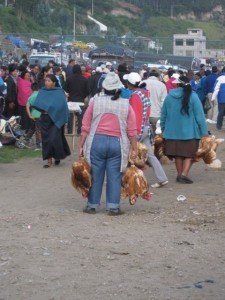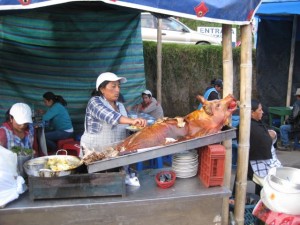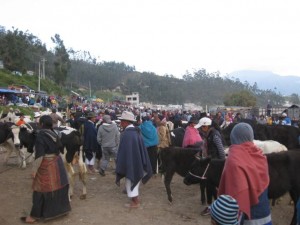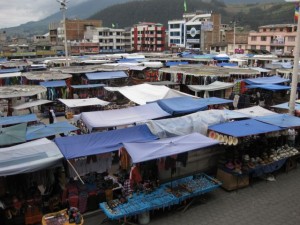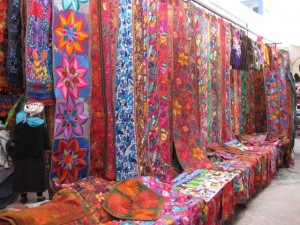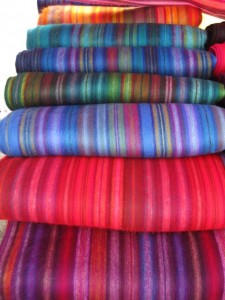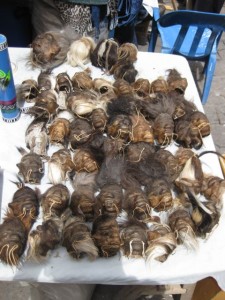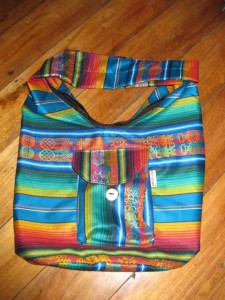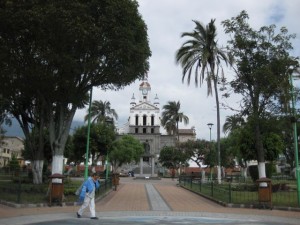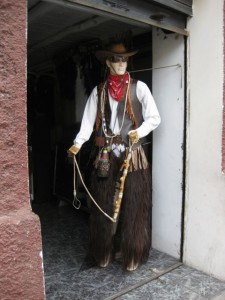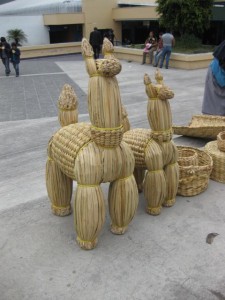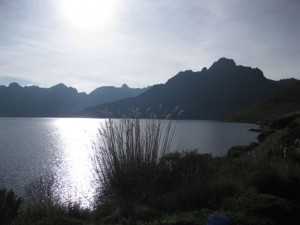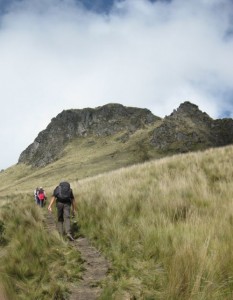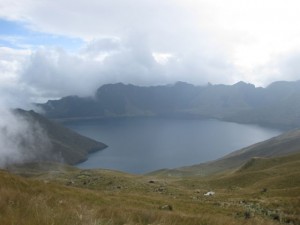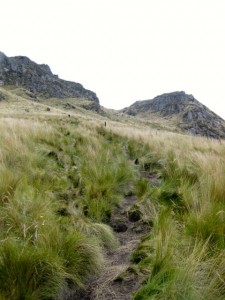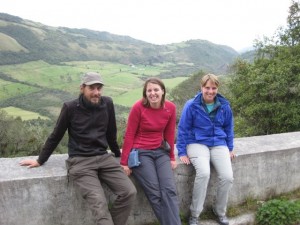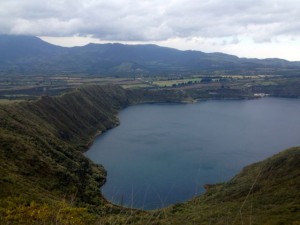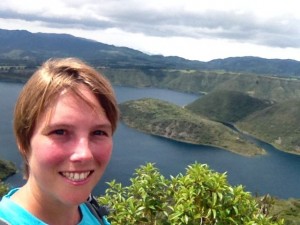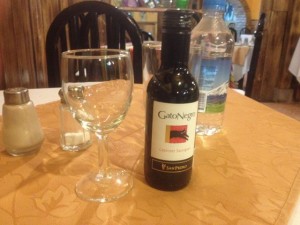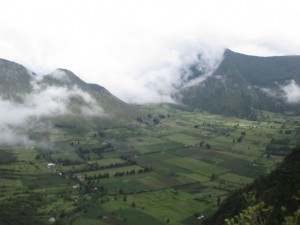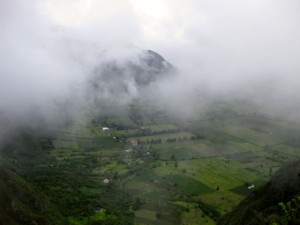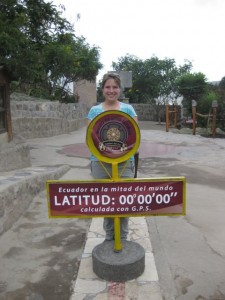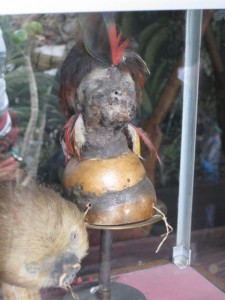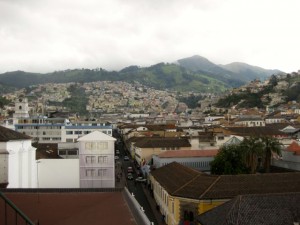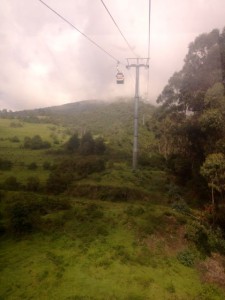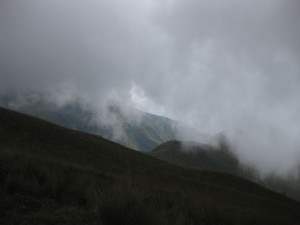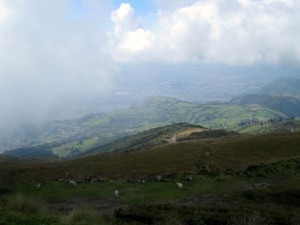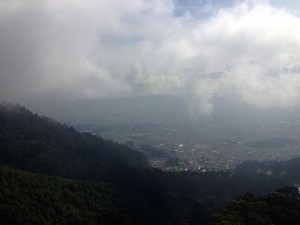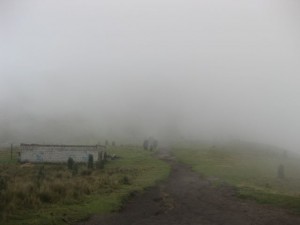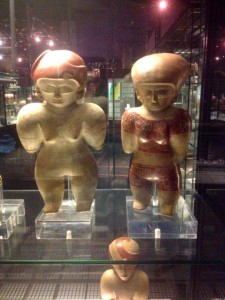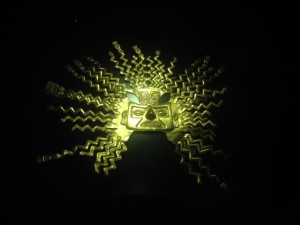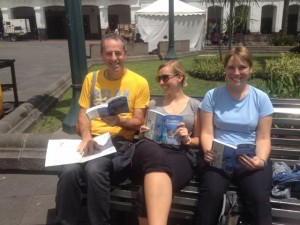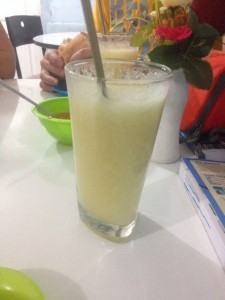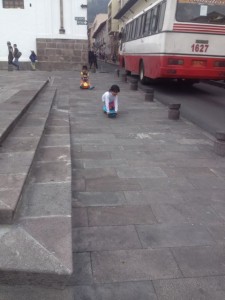My time in the Galapagos was awe inspiring, amazing, fantastic – pick an adjective and it applies so long as it is a positive one. It was totally surreal the pristine landscapes and the variety of wildlife. Every so often I would feel how unreal it was – more like being in a staged zoo than in the wild enjoying close encounters with animals in their wild habitat. I got to share the experience with a wonderful group of people which made it that much more exciting and fun.
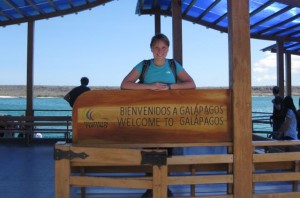
Arriving in the Galapagos on Baltra Island
I had so many pictures and things I wanted to say that I have tried to categorize it a bit below instead of doing day by day. I know I have left out a lot of things so I will have to tell you in person when I get back or we can compare notes when you go to the Galapagos Islands!
Our Boat
Our boat was the Yate Darwin (Darwin Yacht). There were 16 passengers, plus our naturalist guide and the crew. We shared cabins of two people. The boat was considered an upgraded backpackers boat as it had hot showers! Though it was basic, the facilities were clean and comfortable. The mix of people was fantastic – mid-twenties to mid-forties. All adventurous budget travellers. We had a great time together!
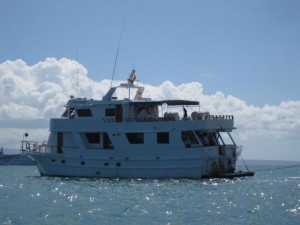
Yate Darwin
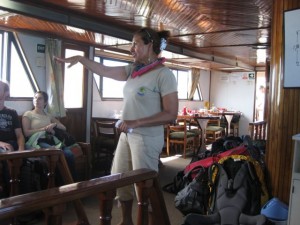
Our guide, Sara and the eating area behind (and our mountain of backpacks on the first day)
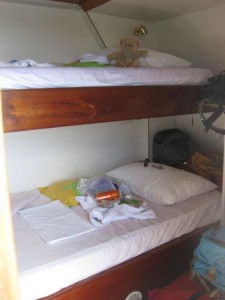
My cabin on the first deck
It actually worked out that 5 people left the boat on Day 5 (including my cabin mate) and 4 new people joined for the last 4 days (you count day 5 twice). The guy who was supposed to come and share my cabin never showed up, so for the last few days I got the cabin (and hence the lower berth) to myself!
The boat would usually anchor out in the bay and we would take the dingy into shore either for a dry landing (usually on rocks) or hop off into the water and wade to shore. We always had to wear our life jackets.
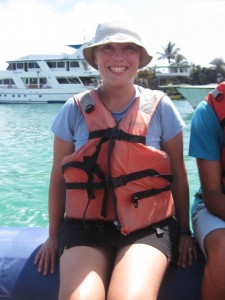
Ready for exploration in the hot sun
Birds
Every island we visited had slightly different birds and animals. It was easiest to see the variations in the colour and size of the iguanas. But also some birds were limited to certain islands because the landscapes provided for particular needs for breeding. Many of the birds were in their breeding season and it was incredible how close we could get to them and their young.
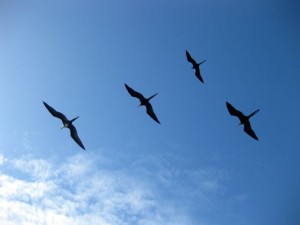
Gulls flying along with our boat
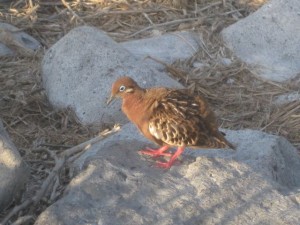
Galapagos dove – note the red feet and turquoise around the eyes
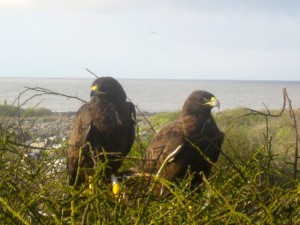
Falcons
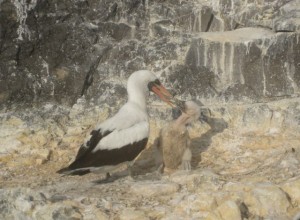
Masked booby feeding its baby
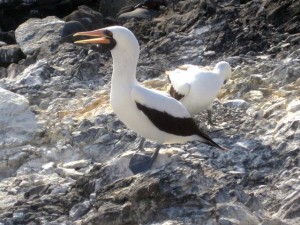
Male masked booby
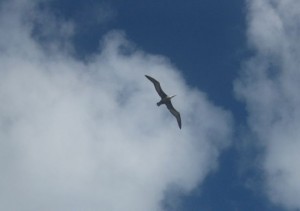
The last waved albatross on the island – all the adults had already moved to other islands
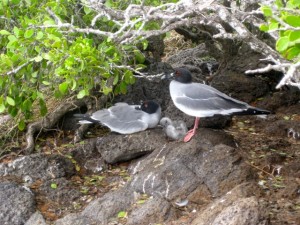
Not sure what these are
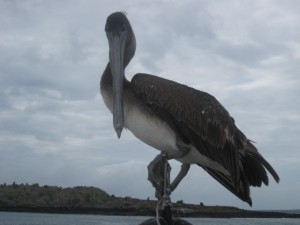
Pelican riding the front of the boat
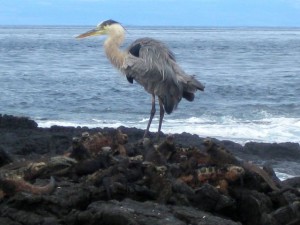
Heron hanging out with a mountain of iguanas
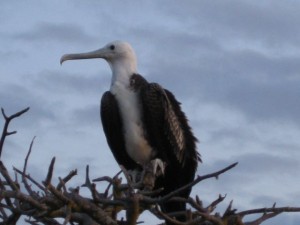
Adolescent frigate bird
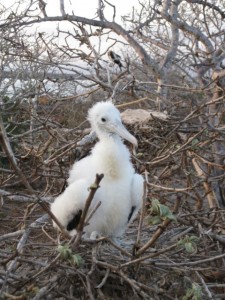
Baby frigate bird
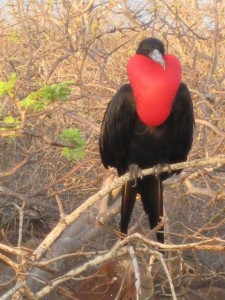
Male frigate bird showing off for the females
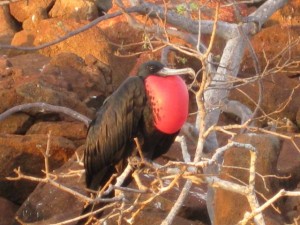
Another male show off
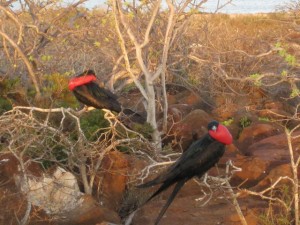
This time with a wing man
On our very last morning we managed to finally see a pair of Blue footed booby birds with the male doing his mating dance
.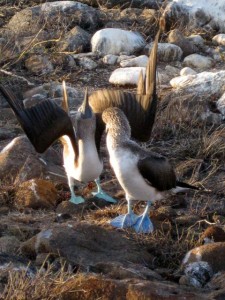
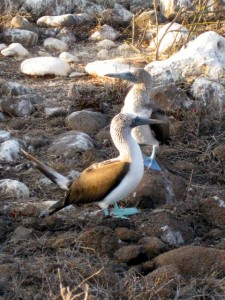
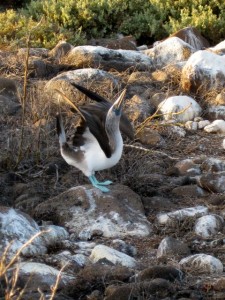
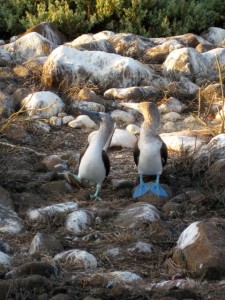
We even managed to see some flamingoes in the distance.
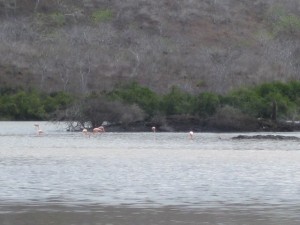
Snorkelling
Everyday we had at least one snorkelling excursion – usually two. We would do one swim from shore exploring the shallow waters from the beach and another one in deep waters where we would jump off the dingy to usually explore around cliffs.
We saw so many animals – many varieties of fish and see life.
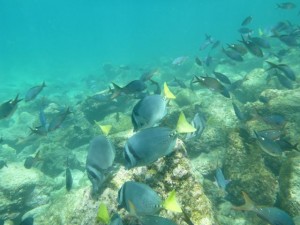
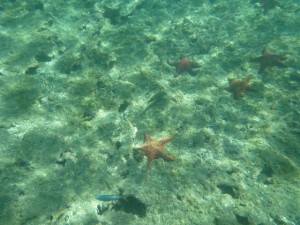
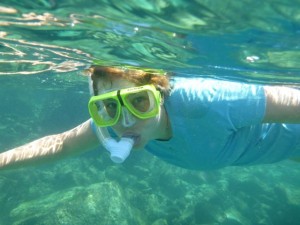
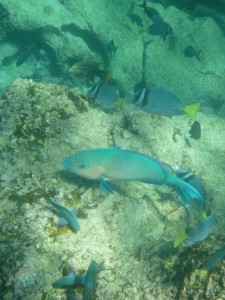
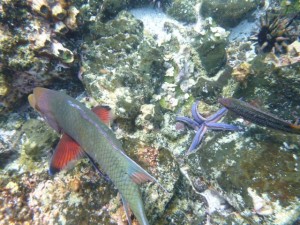
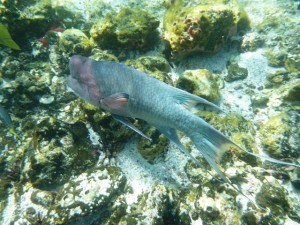
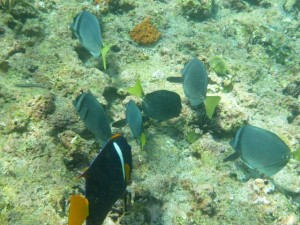
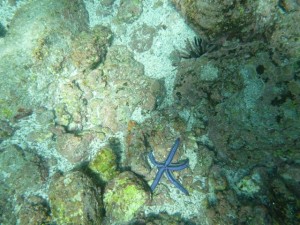
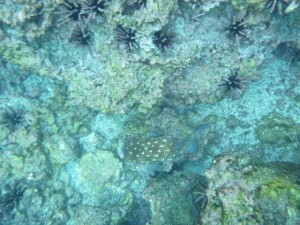
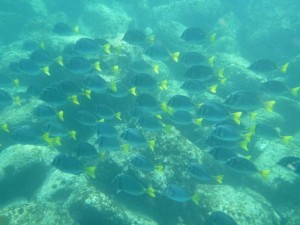
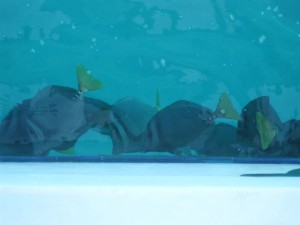
Fish eating off the side of the boat
The most dramatic though was getting to swim with sea lions, penguins, and even sharks. The sea lions would swim close and dart away doing flips and spirals in the water. We would try to imitate them and they would swim around us. The penguins were so fast – like speeding torpedoes in the water. You usually didn’t realize they were there until they swam away. The sharks were small – only 4-6 feet long, and just ignored us. The sea turtles were so graceful in the water.
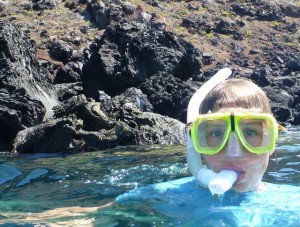
The penguins were initially found above water
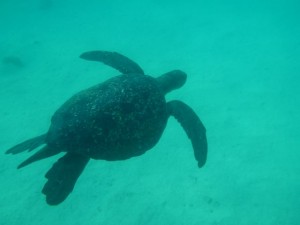
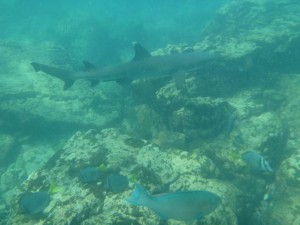
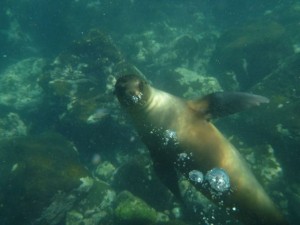
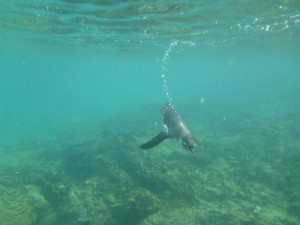
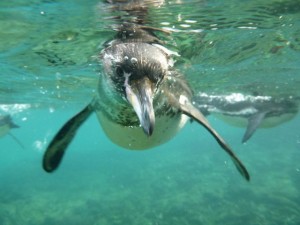
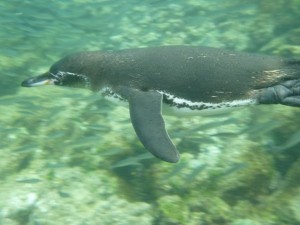
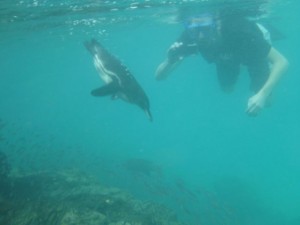
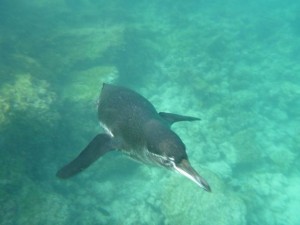
Our group tended to swim as a pod so we had lots of eyes to spot interesting animals, fish, sharks, or rays.
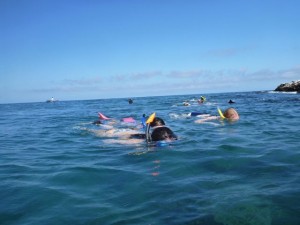
To give proper credit all the underwater pictures were taken by one of my cruise-mates, a fellow Canadian, Aviva with her waterproof camera. As I didn’t originally plan to go to the Galapagos I wasn’t very prepared.
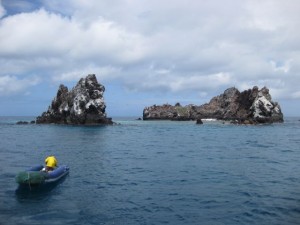
Devil’s Crown – our most challenging snorkelling location as we had to swim through strong currents
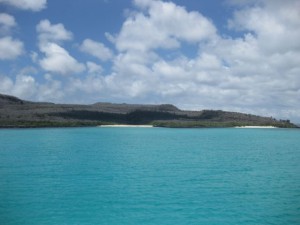
Our first snorkelling location
Giant Tortoises
On the day when some of our group left and new people joined we spent an entire day on Santa Cruz island. In the morning we visited the Charles Darwin Research Station where they do some breeding as well as raising baby tortoises. When eggs are laid in the wild, researchers go to the beaches where the tortoises lay their eggs and pick them up. The eggs are incubated and raised at the research station for the first 7 years of their lives. This enables them to grow up in a protected environment until they are no longer easy prey. They are then released back to their native islands. So all the giant tortoises now living in the wild on the islands were actually raised at the research station. Most of the tortoises can live to be 150-200 years old.
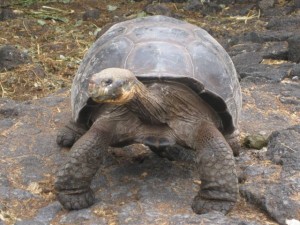
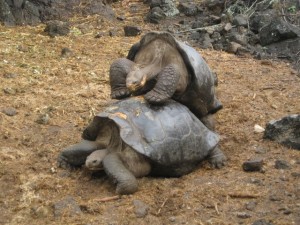
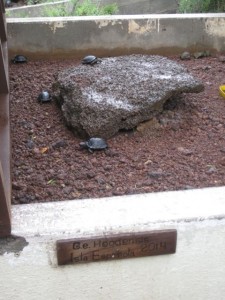
Baby tortoises just born
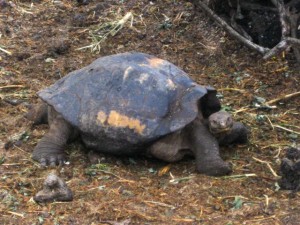
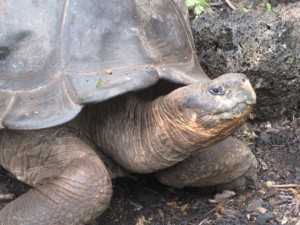
After visiting the research station we visited a farm where there are many tortoises wandering around wild. It is illegal to move or in any way interfere with a tortoise in the wild. This is a problem for some farmers as they love to eat the crops!
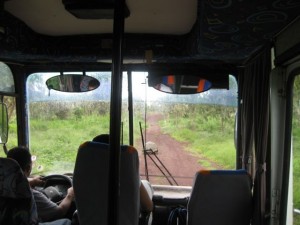
A giant tortoise blocking the road
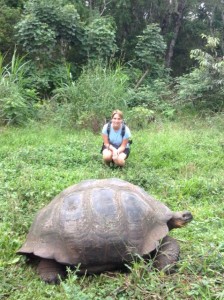
Getting up close with a massive male – he was about 1.5 meters across.
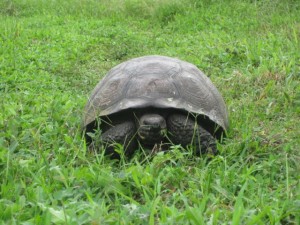
A male checking us out
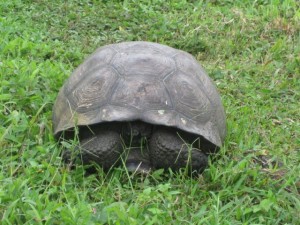
He decided he didn’t like us to retreated into his shell
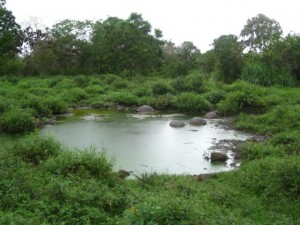
They bury themselves in mud to get away from mosquitoes and other insects
At the farm we had some fun playing with a shell of a deceased animal. The shells weigh about 25kg and it is hard to walk on all fours in them!
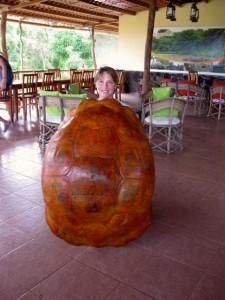
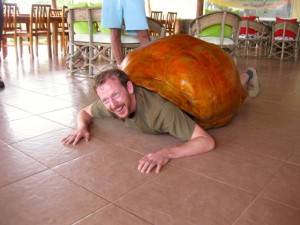
When Darwin was in the Galapagos on his famous trip on the Beagle, there are tales of him riding the tortoises. Of course this is now banned, but I did manage to find a lovely specimen to ride in the main port town, Puerto Ayora.
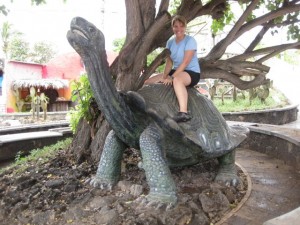
Riding a very giant tortoise in Puerto Ayora
Dolphins
On a couple of occasions we had dolphins who came and swam along side our boat, playing in the bow spray. They were so much fun to watch.
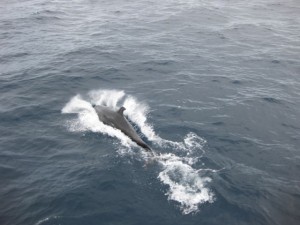
Dolphin jumping
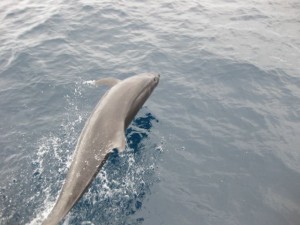
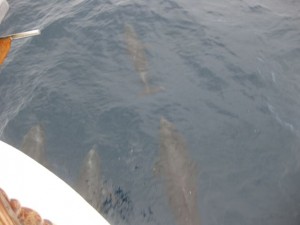
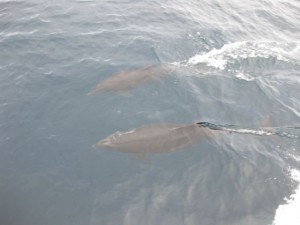
I have a video but unfortunately it is too big to upload.
Iguanas & Crabs
On every island there are different kinds of iguanas. They vary a lot in colour and size and they are everywhere. Walking down the path we had to be very careful not to step on the iguanas.
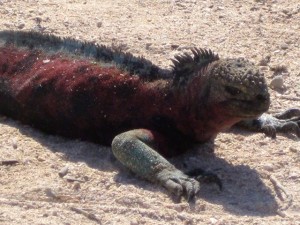
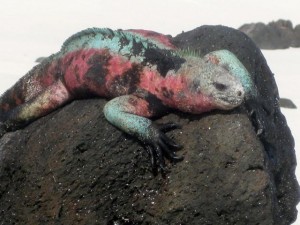
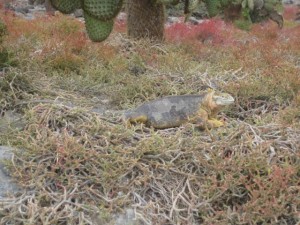
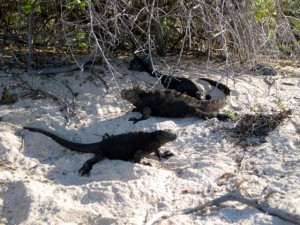
On all the beaches were colourful Sally Lightfoot Crabs. They are very agile and can move vertically up rocks going backwards. They were fascinating to watch and weren’t afraid of any of the other animals.
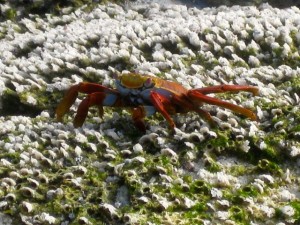
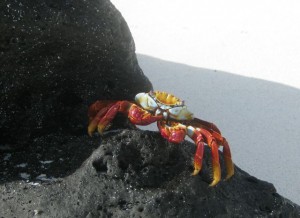
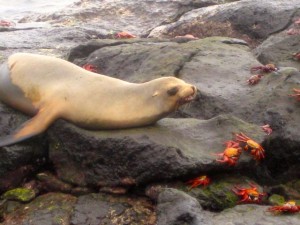
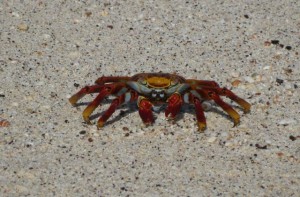
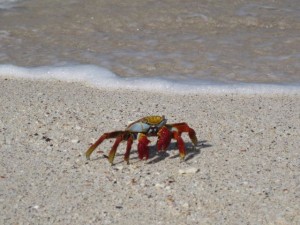
Sea Lions
By far the prize for the cutest animal that we saw goes to the sea lions and their babies. It is their breeding season so there were sea lion babies everywhere. The sea lion colonies are on almost every island and beach so they started in many photo shoots. We were able to get very close. We weren’t allowed to touch any of the babies though. The mothers recognize the baby by its scent mostly. If humans touch it that changes the scent and the mother will refuse to feed the baby.
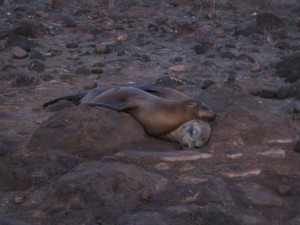


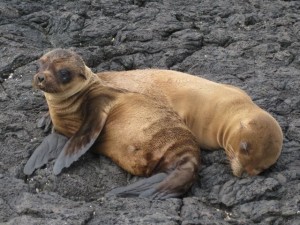
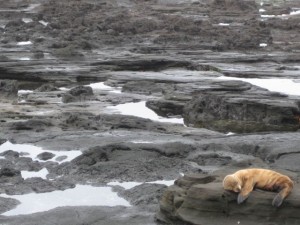
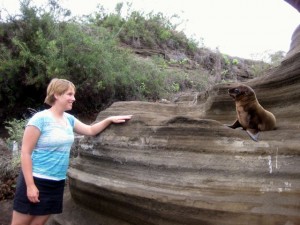
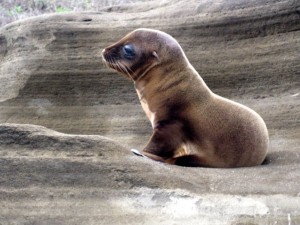
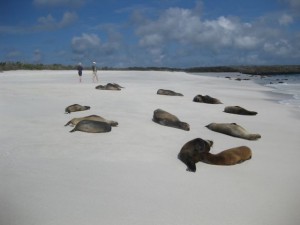
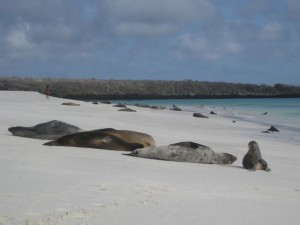
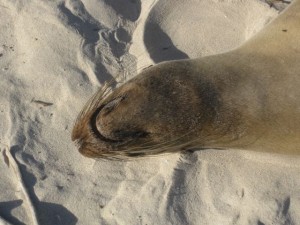
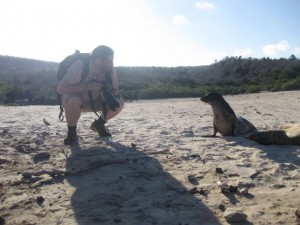
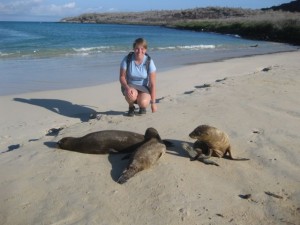
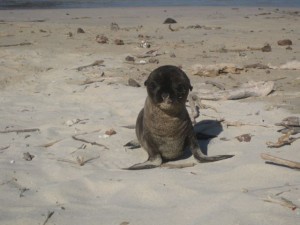
We also got to see some fur seals playing in a small cove and sunning themselves on the beach.
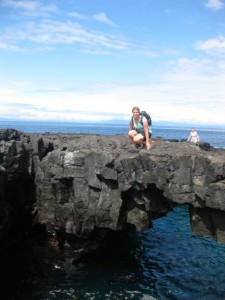
Fur seals playing in the water if you look closely
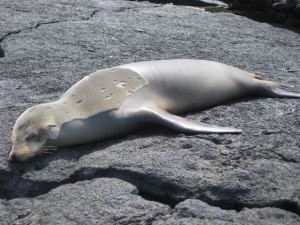
Landscapes and Beaches
The animals were the overall stars of my time in the Galapagos but the stunning landscapes of the islands with their interesting geology and wonderful beaches came a close second.
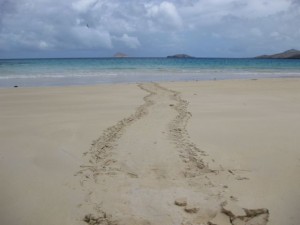
Sea turtle tracks as it made its way up the beach to the dunes to lay eggs
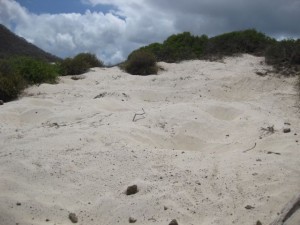
Dunes where sea turtles laboured all night to dig the hole to lay their eggs
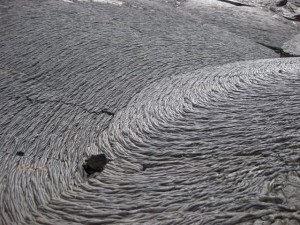
Cooled lava from an eruption 100 years ago
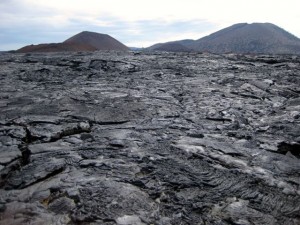
The cooled lava flow from 100 years ago
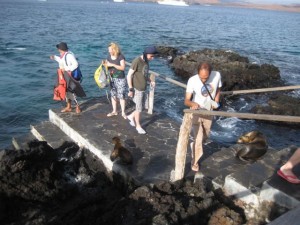
Trying to get off the dingy was challenging trying not to disturb the sea lions at their morning snooze
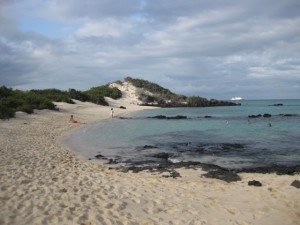
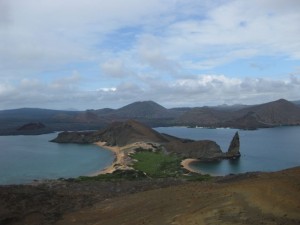
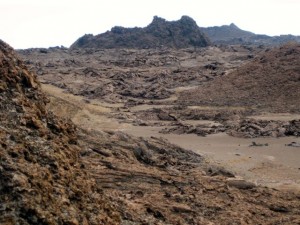
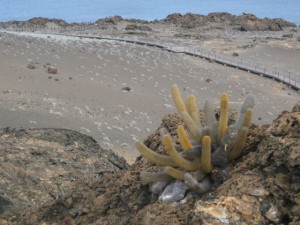
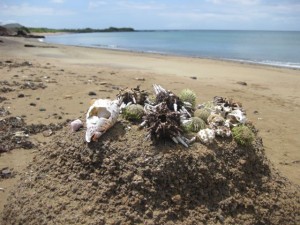
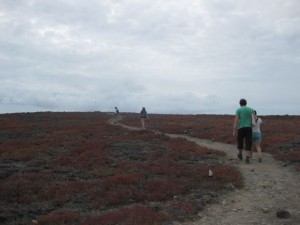
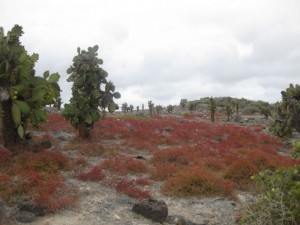
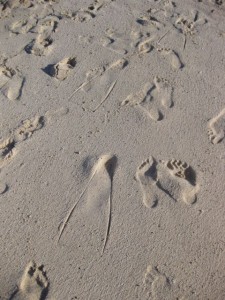
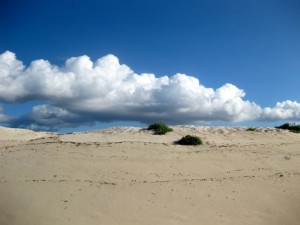
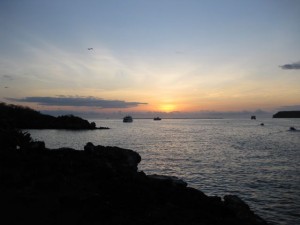
Puerto Ayora
We did get a break from the boat for an evening in Puerto Ayora which is the most populous town in the islands at 15,000 people.
They have a small fish market where not only humans shop for fish and sea food. The humans are joined by sea lions and pelicans who are asking, noisily, for their share.
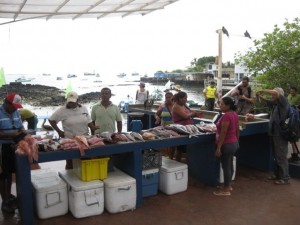
The fish market from the human side
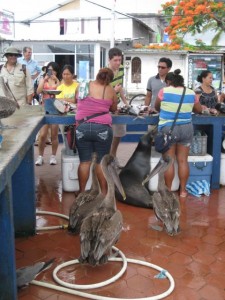
The animals side
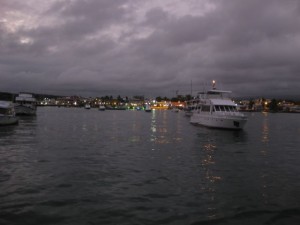
Puerto Ayora
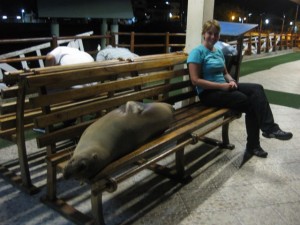
A homeless sea lion on the municipal docks
Further Explorations
This was a very active trip. Besides all the hiking and snorkelling we did some other types of exploration.
All of the islands have been created in the last 9 million years from volcanic eruptions. Many of the islands are still considered to be active. In some the hot lava formed tunnels. We were able to go into one of these and to walk through it. Going deeper into the tunnel it filled with sea water and we were able to swim though it was very very cold.
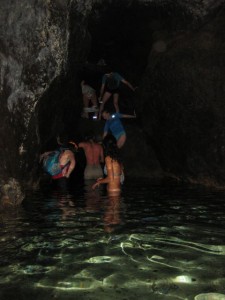
Climbing over a boulder into the cold water in the dark lava tunnel
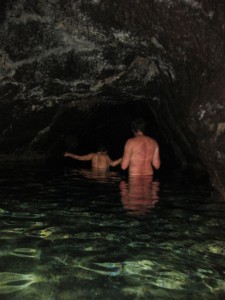
Exploring deeper into the lava tunnel by the light of many head lamps and camera flashes
One of the places we visited is called Post Office Bay. When the islands were mostly used by pirates and other explorer types, they had an informal postal system. They would leave messages in the post box and people passing by going to that part of the world would pick up the message and pass it along. No postage needed though no guarantees on when you message would arrive. This informal system is still in use by tourists. If you leave a post card, you can pick up ones from where you live. You either deliver them in person or by post when you return to your country. I left a couple and have a few to deliver when I get home.
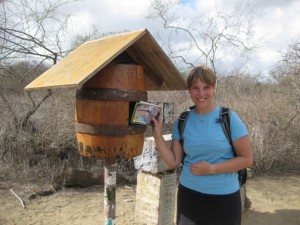
Overall the Galapagos was an extraordinary experience. I was only able to see a small portion of the wondrous variety of wild life and scenery. I will definitely be going back again.
